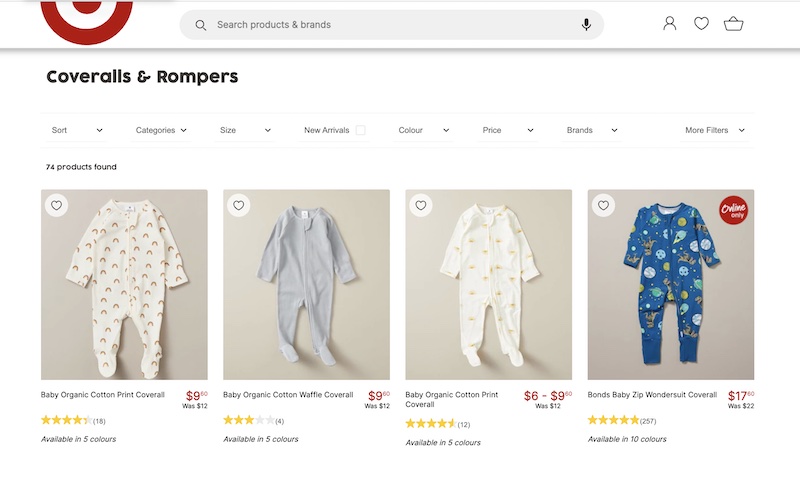The practice and process of displaying and selling products to customers is known as merchandising. Retailers use merchandising to influence customer intent and achieve sales goals, whether digital or in-store.
A variety of merchandising techniques are used in both physical and digital stores to arrange products, communicate their value, and create an optimal customer experience. Many disciplines fall under the purview of merchandising, and there are numerous types of merchandising.

What is merchandising in retail?
The History Of Merchandising
A great way to answer the question "what is merchandising?" is to look back in time.
To begin with, merchandising is as old as trade itself. Buyers and sellers have always had dynamic relationships in which the former focused on providing enough value to make the sale and the latter focused on determining whether the value was worth the purchase.
Step into the markets of Varanasi, India, one of the world's oldest continuously inhabited cities, and you'll notice parallels between ancient forms of merchandising and even today's most digitally-focused responsive merchandising efforts.
Elements of visual merchandising are on full display in Varanasi, as they are in most of the world's outdoor marketplaces and certainly in the merchandising spaces within shopping malls Many modern merchandising techniques, such as the use of color and traffic manipulation, are also employed.
What we see today as new merchandising techniques are simply updated versions of what has been around for millennia.
Today's use of holograms to attract the attention of shopping mall visitors, for example, isn't all that dissimilar to how snake charmers in Varanasi draw tourists' attention to specific stands.
And whether we're talking about iPhones or meat, merchandising displays have always been important.
Benefits Of Merchandising
Cost-effectiveness
Merchandising is one of the most cost-effective promotional mix tools, particularly if a company is experienced and skilled in its application. It may be beneficial to businesses with limited promotional funds because techniques such as product facing control and improved shelf positioning may incur little to no additional expense.These tasks can also be performed by sales representatives who are already paid.
Influence At The Point Of Sale
Merchandising has an impact on customers at the final stage of their purchasing decision. As a result, marketers strive to create brand preference awareness before the customer enters the store. At the point of sale, the target customer can specify brands.
A consumer franchise is used to achieve the preference. It is a public relations and advertising component of the promotional mix that is used to increase brand preference.
Manufacturers who are unwilling to lose a sale at the store supplement their expensive products with low-cost merchandising, especially when competition is fierce.
Cycles And Variety In Merchandising
Today's merchandisers, as they have always done, are leaning into change rather than clinging to what is familiar. They are embracing new technologies while also listening to their customers. And they are shaping (and being shaped by) the ongoing evolution of digital merchandising.
To understand merchandising, however, it is necessary to understand how cycles and variety play important roles.
For example, during the holiday season, some merchandisers, such as chocolate shops, can see up to 80% of their total sales.Constantly developing new chocolates, discounts, and enticing displays will be less important to them than ensuring they have a strong merchandising strategy in place for the months of October, November, and December.
Furthermore, what merchandising is (and what form it takes) is highly dependent on the variety (of geography and of the products and services themselves).
Hardware stores in San Francisco, for example, are unlikely to stock bags of salt and snow shovels in the same way that they do in Chicago.
So, while the fundamentals of merchandising will not change, the strategies and techniques of the practice will.
Ecommerce Merchandising
Ecommercemerchandising is the practice of strategically displaying products on a website in order to increase findability, conversions, and revenue.
Great online merchandising is more than just attractively displaying products — it's also about optimizing your path to purchase regardless of where users enter your website or where they are in that path.
The good news is that improved customer serviceand increases in key businessmetrics go hand in hand. Customers are more likely to buy from you if you make it easier for them to find the products they're looking for.
Every strategy we discuss here will revolve around those objectives.
What Are Today’s Ecommerce Merchandising Trends?
While ecommerce was once just a new twist on traditional retail, omnichannel has completely changed the game for merchandising.
Simply bringing in-store merchandising online isn't enough anymore: customers expect more from both, and the lines between the two are becoming increasingly blurred. No matter where they are, today's shoppers expect convenience, personalized experiences, and instant gratification.
As ecommerce merchandising evolves into omnichannel, several trends and strategic pivots emerge:
Deep Personalization From AI And Machine Learning
Retailers can now personalize and optimize shopping experiences like never before by applying insights to customer behavioral data. Every click on your ecommerce site is a vote for the attractiveness of a product, and every search query is an opportunity to learn how users interact with your site and what they're looking for.
Focus On Holistic Customer Experience
A bad website experience equals lost revenue. With high expectations for site performance and ease of use, shoppers will abandon a site if they can't find the products they're looking for easily and quickly.
“„"As an online merchant develops their site, they must always keep the customer in mind for ease of use and functionality," says Shep Hyken, a customer experience expert. "You can spend a lot of time and moneyon selling, copywriting, and marketing, but when the customer gets to the site, the experience must be easy, convenient, and frictionless—or it will all be for naught."
Less Manual And More Strategic Searchandising Work
Manual merchandising becomes extremely tedious and time-consuming as product catalogs grow into the thousands. AI-based searchandising—the strategic placement of items within search querieswith the goal of optimizing for a businessmetric—can be useful in this situation.
Rather than requiring merchants to manually adjust search results to highlight products with higher profit margins or bury products with lower customer appeal, a product discovery platform can optimize results automatically based on a variety of inputs such as clickstream data, product attribute, or inventory. And, with a focus on providing a consistent shopping experience, those rules can apply to both search results and browsing pages.
The end result? Ecommerce teams now have the time to develop proactive new strategies for driving KPIs and improving customer experience.
People Also Ask
What Is An Example Of Merchandising?
Merchandising is demonstrated by the phrase "buy three for the price of two." According to marketing experts, merchandising is the glamorous side of retail, whether in upscale fashion stores or supermarkets. The merchandising professional has complete control over which products are purchased and how they are displayed.
What Is A Retail Merchandising?
Retail merchandising draws customers to specific goods and services in a variety of ways. Retail merchandising activities and strategies include in-store design, merchandise selection to match a target market, and physical and digital marketing of merchandise to customers.
What Is The Merchandising Process?
Understanding consumer needs, identifying and sourcing the right merchandise, deciding on the right assortment, planning distribution of merchandise to different locations in the right quantities, deciding on pricing, communicating merchandise offerings to target customers are all part of the merchandising process.
The Bottomline
Merchandising will determine how you use your space, pricing strategies, display techniques, product selection, and many other factors. Not only that, but wise merchandising decisions will help define your brand and customer experience, as well as drive sales. Understanding how merchandising works will help you create a beautiful store that will keep customers spending and returning time and time again.


